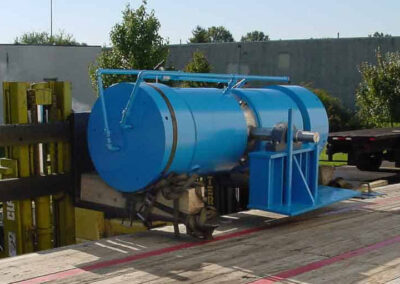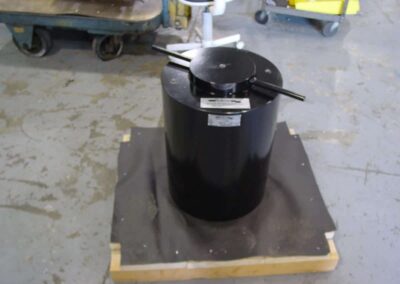Designing Pressure Vessel Requires Expertise

Pressure vessels play a pivotal role across diverse industries such as petrochemicals, energy, pharmaceuticals, and aerospace. These vessels are integral for storing and transporting gases and liquids under high pressure, making them indispensable for various industrial operations. The intricate task of designing and engineering pressure vessels necessitates the expertise of mechanical engineers and pressure vessel designers. Their specialized knowledge ensures the vessels' safety, efficiency, and alignment with stringent industry standards. This article delves into the fundamental aspects of designing appropriate pressure vessels, emphasizing the significance of seeking expertise within this intricate field.
1. Understanding Pressure Vessels: Pressure vessels are containers meticulously fashioned to contain gases or liquids under pressures significantly surpassing atmospheric levels. They manifest in diverse forms and sizes, encompassing cylinders, spheres, horizontal, or vertical tanks. Pressure vessels find extensive utility in storing chemicals, processing fluids, generating steam, and facilitating various chemical reactions.
2. Safety Considerations: Safety emerges as the paramount concern in pressure vessel design. The failure of a pressure vessel can lead to catastrophic outcomes such as explosions or the leakage of corrosive materials, causing injuries and property damage. To ensure proper design, fabrication, inspection, and testing of pressure vessels, rigorous regulations, codes, and standards have been instituted.
3. Material Selection: The selection of appropriate materials for pressure vessel construction stands as a critical decision. The choice of materials hinges on factors like the nature of the contained fluid or gas, operating conditions (pressure and temperature), and requirements for corrosion resistance. Common materials employed for pressure vessels encompass carbon steel, stainless steel, aluminum, and an array of alloys. For instance, hydrogen compressor manufacturers deploy highly trained engineers specializing in design and materials selection.
4. Compliance with Codes and Standards: The design of specific systems like closed loop CO2 extraction system demands adherence to industry-specific codes and standards. Prominent examples include the ASME Boiler and Pressure Vessel Code and the European Pressure Equipment Directive (PED). These codes provide comprehensive guidelines for the secure design, fabrication, and operation of pressure vessels, ensuring uniformity and dependability in their performance.
5. Stress Analysis and Finite Element Analysis (FEA): Stress analysis represents a pivotal element of pressure vessel design. Engineers employ analytical methods and Finite Element Analysis (FEA) to evaluate the stresses and deformations that pressure vessels might undergo under diverse operational conditions. This analysis guarantees the vessel's capacity to endure projected loads and pressures safely.
6. Thermal Analysis: Pressure vessels often confront fluctuations in temperature during operation. Consequently, thermal analysis assumes significance to comprehend the impact of temperature changes on the vessel's structural integrity and material attributes. Meticulous thermal design is crucial to avert challenges such as thermal stress and fatigue, which could jeopardize the vessel's longevity.
7. Design Optimization: Achieving an ideal pressure vessel design involves a nuanced equilibrium between performance, cost-effectiveness, and safety. Experienced engineers take into account variables such as material choice, geometry, and fabrication techniques to attain a design that fulfills performance prerequisites while adhering to financial limitations.
8. Design for Manufacturing: Efficient manufacturing constitutes a cornerstone of pressure vessel design. Engineers must ascertain that the vessel's design can be actualized using existing manufacturing processes and tools, simultaneously guaranteeing precision in dimensions and consistent quality.
9. Customization for Specific Applications: Pressure vessels are often customized to cater to distinct industrial applications. Individual industries might present unique requisites, such as the demand for lightweight materials in aerospace or augmented corrosion resistance in chemical processing. Proficiency in tailoring pressure vessel design guarantees alignment with the precise requirements of the intended application.
10. Non-Destructive Testing (NDT): During fabrication and periodic inspections, non-destructive testing (NDT) methodologies are employed to identify imperfections or anomalies in pressure vessels without causing harm. NDT serves to uphold the integrity and durability of pressure vessels throughout their operational lifespan.
11. Maintenance and Life-Cycle Management: Expertise in pressure vessel design extends beyond initial construction. Engineers also factor in the long-term upkeep and lifecycle management of the vessels, encompassing inspection schedules, repair protocols, and criteria for retirement or replacement.

Designing an apt pressure vessel entails multifaceted and pivotal processes that necessitate specialized know-how. Safety, regulatory adherence, and optimum performance remain paramount, and any compromise in design could entail severe repercussions. Adept ASME pressure vessel manufacturers endowed with profound insights into material science, stress analysis, thermal considerations, and industry benchmarks stand as essential contributors in fabricating reliable and efficient pressure vessels. As technological advancements and industrial requisites continue to evolve, the importance of expertise in pressure vessel design undeniably safeguards the safety and prosperity of diverse industrial processes.